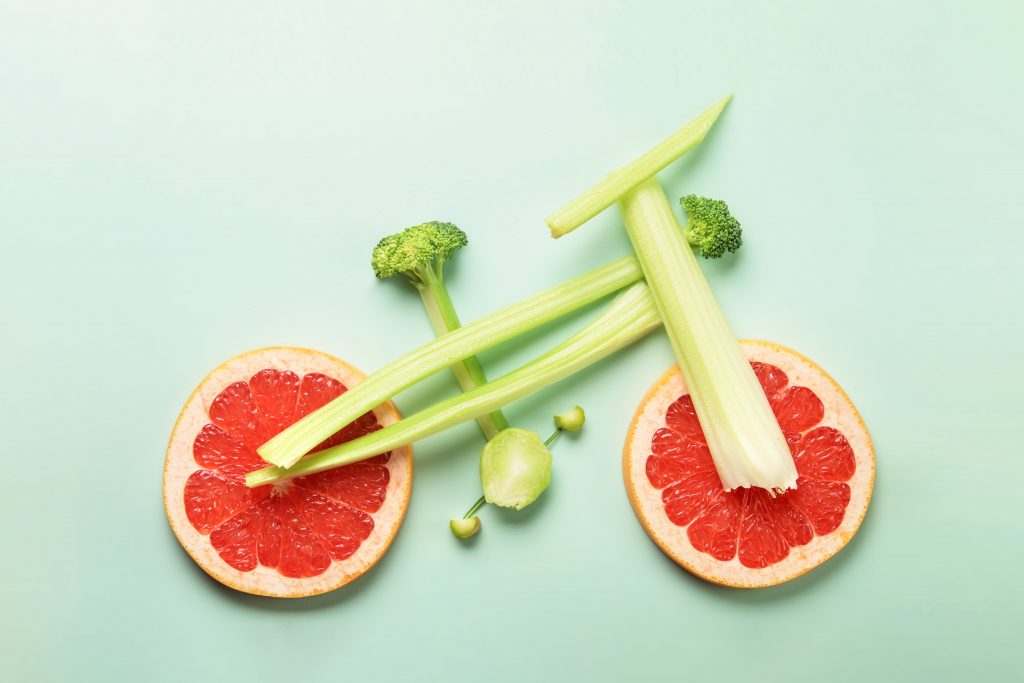Today’s guest post comes courtesy of Nevada based strength & conditioning coach, Travis Hansen.
Travis has contributed several articles to this site in years past and he always impresses me with his diversity in knowledge.
(FYI: His ebook, The Complete Speed Encyclopedia, is one of the best resources on the topic I’ve ever read.)
NOTE: 👆👆 Not an affiliate link.
Anyway, he also knows a thing or two with regards to helping his clients/athletes shed fat and the “minor” nutritional tweaks that they may need to consider; like calorie cycling.
Check it out.

Calorie Cycling Strategies For Fat Loss
We humans are cyclical creatures in terms of our overall behavior, and when it comes to nutrition and our calorie intake there are no exceptions.
The fundamental reason for why we need to cycle calories over the course of weeks and months when attempting to lose weight/fat is because of natural adaptations and guaranteed reduction of our metabolic rate and calorie burn that naturally occur when calories are lowered below a certain level necessary to cause effective weight/fat loss.
Fortunately for you, all guesswork for how to cycle calories will be eliminated for you through a specific diagram provided for you shortly.
Cycling calories is so powerful and essential that our body literally fights back and sets our body’s natural weight range, otherwise known as our “metabolic set point,” higher when we attempt to keep our calories fixed aggressively too low for too long.
So the take home message here is that cycling calories is inevitable and there is a very specific way you can approach this nutritional law and have it work to your advantage so that you maximize all aspects of your results and feel physically and mentally satisfied in the process.
Some of the most notable evidence supporting the idea of cycling calories in the “short term” centers around the hormone, leptin.
According to Lyle McDonald and his research on the matter, leptin levels drop dramatically within the first week or so of dieting.
The drop can be as much as 50%.
For the non-nerds reading, leptin is our primary metabolic regulator, acting on several areas of the body. So in theory, if we cycle our calories during the week we can boost leptin and keep our metabolism higher.
Note From TG: For a more thorough discussion on the topic of Leptin and it’s affects on metabolism you can check THIS out. Grab a cup of coffee. You’ll need it…;o)
Moving forward I want to break down three categories of structured eating that will need to be built into your collective nutrition plan that feeds into (<—HA, see what I just did there) and supports the concept of calorie cycling.
- Free Meals
- Structured Refeeds
- Full Diet Breaks
Free Meals (Cheat Meals)
Free meal(s) can be considered structured eating where calories are higher and you overfeed more.
Key Word: Structured. Also, meal (as in singular).
This is basically where you pick one single meal of your liking, set aside all the rules, and you enjoy some pizza or tacos.
Or both…;o)
To note: There’s really no inherent physiological benefit happening here. One single meal isn’t going to break or make a dietary approach or be the panacea of success.
It can’t help, nor can it hurt you in terms of actual fat and weight loss, so you shouldn’t worry much.
Rather, the main benefit here is psychological.
The feeling of complete deprivation of desired and enjoyable foods for weeks and months on end can become very stressful and completely depressing.
A free meal is one method that provides a “light at the end of the tunnel” per se.
Research has shown consistently time and time again that flexible dieting strategies are far more effective than extremely strict and rigid approaches both in terms of overall results and healthy eating behavior.
Structured Re-feeds
A structured reefed is simply a 4-5 hour window where you don’t count calories and you deviate from both the quantity and type of food that you are eating with your normal fat loss diet.
Moreover, carbohydrates are supposed to be higher during the re-feed.
It’s also worth noting that carbohydrates are highly “anti-catabolic” in nature. Meaning they prevent muscle tissue and others from degrading or breaking down through the increases in insulin production. For example, a recent study from Campbell et. al 2020 found that a two day reefed in resistance trained individuals preserved RMR, and FFM a.k.a muscle mass. 2 .
Lastly, in my experience re-feeds should generally come in the evening for two reasons.
1) It’s psychologically much easier to resume normal dieting and healthier eating at the start of the next day where you interpret a clean slate rather than attempting to pwn a industrial sized bag of Skittles in the middle of the day and then attempt to get back on track after the fact.
2) It just seems to work well and mirrors normal human behavior.
A good general rule of thumb is to reefed from 5-10pm.
This works well since structured re-feeds are programmed on the weekend where a majority are partaking in social activities and get-togethers where higher food consumption is almost guaranteed to occur.
SIDE NOTE: It’s also ideal to perform a workout at or near a re-feed so that the carbohydrates and other nutrients are automatically soaked up in the muscles. This is especially true for those who are overweight or have sensitivity issues to carbohydrates. When you eat your carbohydrates around intense lifting times you are conditioning your cellular components to better handle and manage carbohydrates to help limit potential feelings of hunger and overeating.
Full Diet Breaks
Just as the name states, full diet breaks are periods lasting as high as two whole weeks where you increase calories to maintenance levels and are allowed much more leniency with food selection.
Recent research has also supported that intermittent calorie maintenance may be ideal for faster fat loss.
Not only from a psychological standpoint, but also in terms of feelings of “confidence” that you’ll be able to stay on track once stricter eating resumes again.
Another huge potential benefit to diet breaks is that they can programmed around periods of vacation or special events.
Anecdotally, it has been shown that breaks from dieting can be viewed much more positively by dieters, since it’s actually part of a strategic plan, and people report an easier time returning to diet once the break is over.
General Diet Breaks Guidelines
1️⃣ Raise calories by 500-1000 calories daily.
2️⃣ Keep weight training hard and regularly and maintain at least 50% of your cardio work.
3️⃣ Don’t worry about counting macro’s until the end of the break.
Body-Fat Percentage
(Men / Women)
Diet Break Frequency
<10% / 18%
Every 6–8 weeks
10-15% / 18–23%
Every 8–12 weeks
>15% / >23%
Every 12–16 weeks
(I.e., the leaner you are, the more frequent “breaks” you can get away with).
(Chart courtesy of Andy Morgan, RippedBody.com “How to Use a Diet Break for Fat Loss to Get Shredded Lean”)
About the Author
 Travis Hansen has been involved in the field of training for over a decade, and he has over 60,000 hours of hands-on training experience.
Travis Hansen has been involved in the field of training for over a decade, and he has over 60,000 hours of hands-on training experience.
He graduated with a Bachelor’s degree in Fitness and Wellness, and he holds three training certifications—from the ISSA, NASM and NCSF.
He was the Head Strength and Conditioning Coach for the Reno Bighorns of the NBA D-League during their 2010 season, and The University of Nevada-Reno golf team in 2015.
He was the former Director of the Reno Speed School. He has worked with hundreds of athletes from almost all sports, ranging from the youth to the professional ranks.
He is also the leading authority on speed development for the International Sports Sciences Association. Check out his website HERE.




